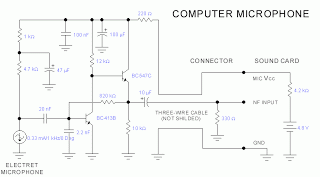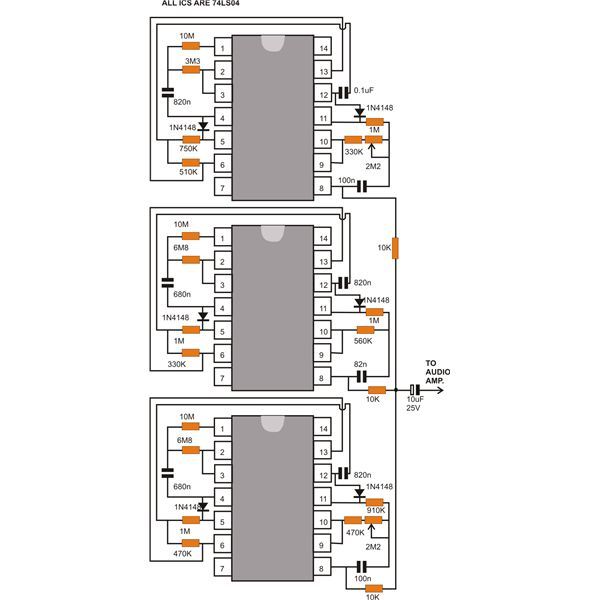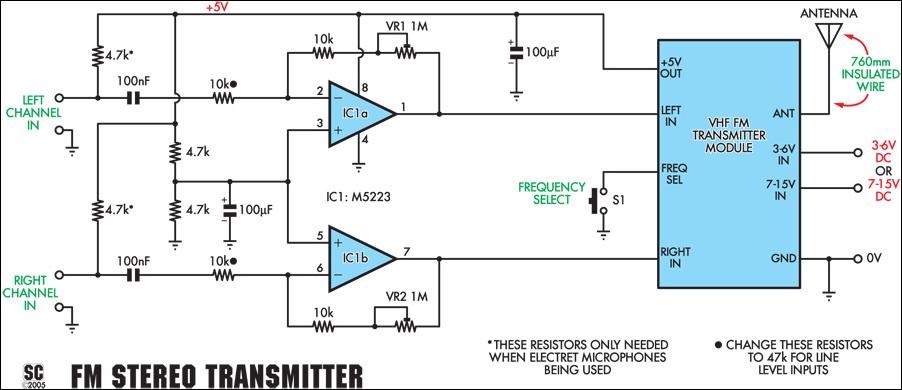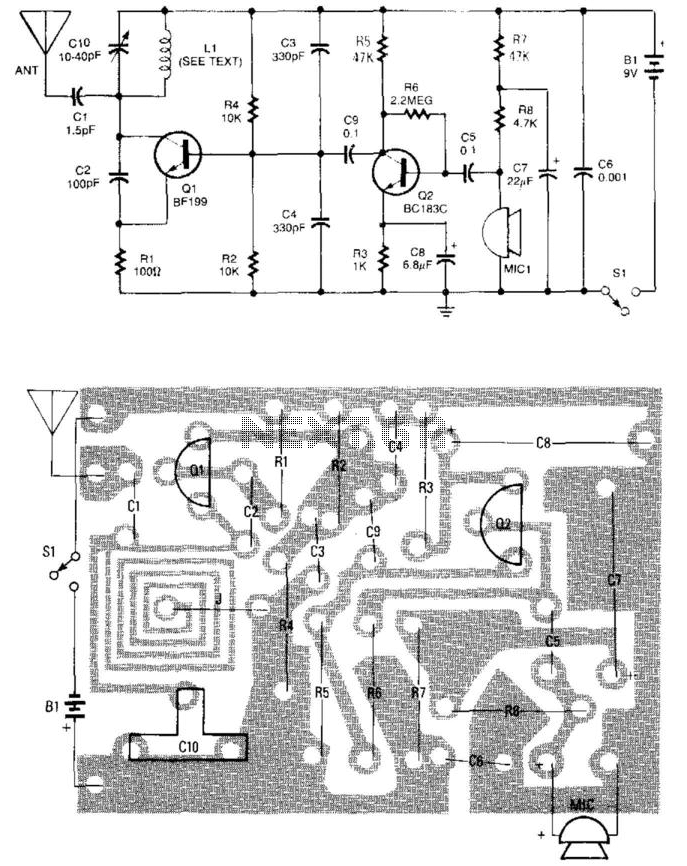
Microphone Circuit-PC Sound Card

This microphone circuit was submitted by Lazar Pancic from Yugoslavia. The sound card for a PC typically features a microphone input, speaker output, and occasionally line inputs and outputs. The microphone input is designed specifically for dynamic microphones with an impedance range of 200 to 600 ohms. Lazar has modified the sound card to accommodate a common electret microphone using this circuit. He has created a composite amplifier utilizing two transistors. The BC413B operates in a common emitter configuration to provide a slight boost to the microphone signal. This is followed by an emitter follower stage using the BC547C. This configuration is essential as the microphone, circuit, and battery may be situated some distance from the sound card. The low output impedance of the circuit, combined with a screened cable, ensures a clean signal with minimal noise interference.
The microphone circuit described utilizes a composite amplifier design to enhance the performance of an electret microphone when interfaced with a PC's sound card. The circuit begins with the BC413B transistor, which is configured in a common emitter arrangement. This configuration is effective for amplifying the low-level audio signals generated by the electret microphone, which typically has a higher output impedance compared to dynamic microphones. The common emitter configuration allows for a significant gain, boosting the microphone's output signal to a more usable level for the sound card.
Following the BC413B, the circuit employs a BC547C transistor configured as an emitter follower. This stage serves to further buffer the amplified signal from the first stage while providing a low output impedance. The emitter follower is critical in this design, especially in applications where the microphone and associated circuitry are located at a distance from the sound card. The low output impedance reduces the potential for signal degradation over long cable runs and minimizes the susceptibility to noise pickup, which is particularly important in audio applications.
The design also emphasizes the importance of using a screened cable for the connection between the microphone circuit and the sound card. The shielding helps to protect the audio signal from electromagnetic interference and radio frequency interference, ensuring that the output remains clean and clear. Overall, this circuit effectively adapts an electret microphone for use with a standard PC sound card, providing a reliable solution for audio input applications.This microphone circuit was submitted by Lazar Pancic from Yugoslavia. The sound card for a PC generally has a microphone input, speaker output and sometimes line inputs and outputs. The mic input is designed for dynamic microphones only in impedance range of 200 to 600 ohms. Lazar has adapted the sound card to use a common electret microphone usi ng this circuit. He has made a composite amplifier using two transistors. The BC413B operates in common emitter to give a slight boost to the mic signal. This is followed by an emitter follower stage using the BC547C. This is necessary as the mic and circuit and battery will be some distance from the sound card, the low output impedance of the circuit and screened cable ensuring a clean signal with minimum noise pickup. 🔗 External reference
The microphone circuit described utilizes a composite amplifier design to enhance the performance of an electret microphone when interfaced with a PC's sound card. The circuit begins with the BC413B transistor, which is configured in a common emitter arrangement. This configuration is effective for amplifying the low-level audio signals generated by the electret microphone, which typically has a higher output impedance compared to dynamic microphones. The common emitter configuration allows for a significant gain, boosting the microphone's output signal to a more usable level for the sound card.
Following the BC413B, the circuit employs a BC547C transistor configured as an emitter follower. This stage serves to further buffer the amplified signal from the first stage while providing a low output impedance. The emitter follower is critical in this design, especially in applications where the microphone and associated circuitry are located at a distance from the sound card. The low output impedance reduces the potential for signal degradation over long cable runs and minimizes the susceptibility to noise pickup, which is particularly important in audio applications.
The design also emphasizes the importance of using a screened cable for the connection between the microphone circuit and the sound card. The shielding helps to protect the audio signal from electromagnetic interference and radio frequency interference, ensuring that the output remains clean and clear. Overall, this circuit effectively adapts an electret microphone for use with a standard PC sound card, providing a reliable solution for audio input applications.This microphone circuit was submitted by Lazar Pancic from Yugoslavia. The sound card for a PC generally has a microphone input, speaker output and sometimes line inputs and outputs. The mic input is designed for dynamic microphones only in impedance range of 200 to 600 ohms. Lazar has adapted the sound card to use a common electret microphone usi ng this circuit. He has made a composite amplifier using two transistors. The BC413B operates in common emitter to give a slight boost to the mic signal. This is followed by an emitter follower stage using the BC547C. This is necessary as the mic and circuit and battery will be some distance from the sound card, the low output impedance of the circuit and screened cable ensuring a clean signal with minimum noise pickup. 🔗 External reference





